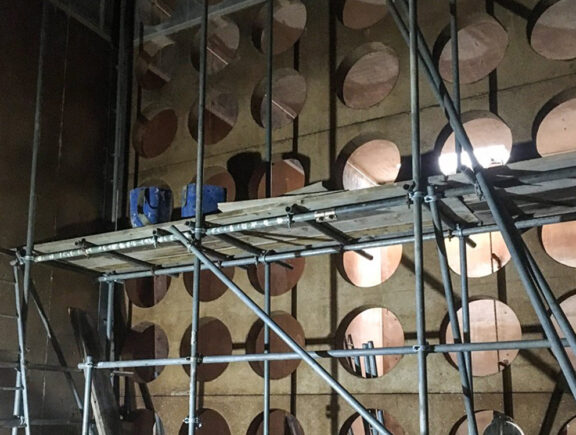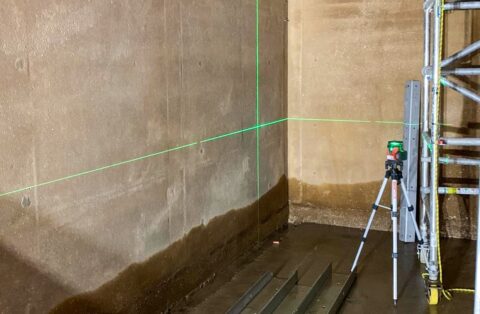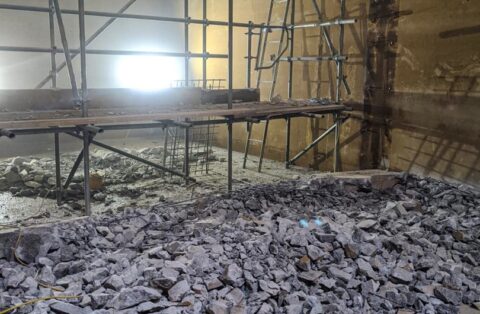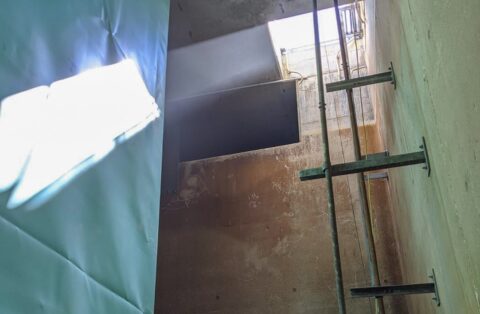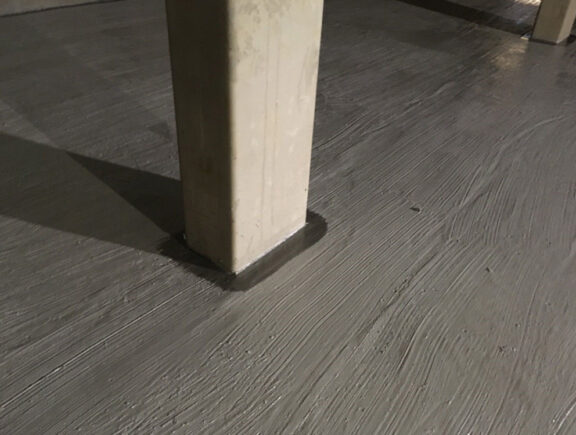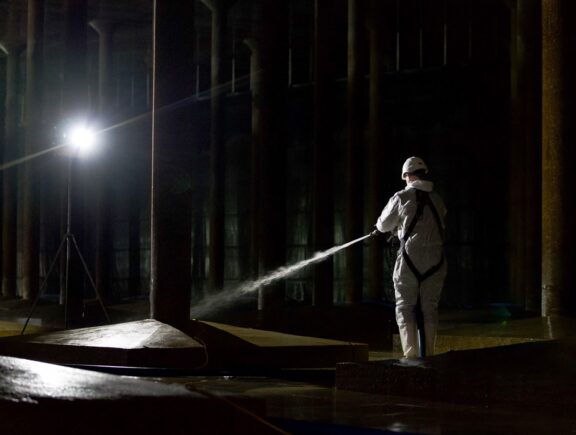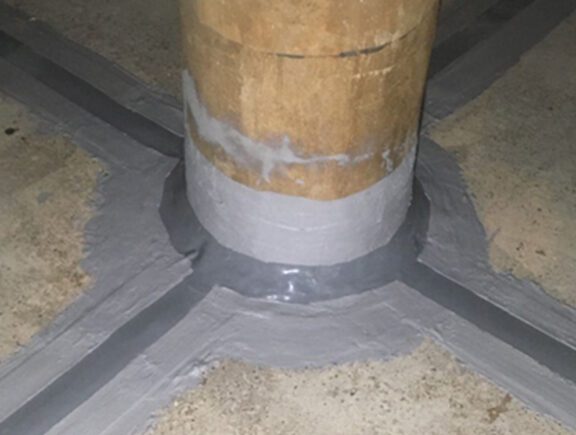The final design consisted of Flagon baffle curtains to achieve plug flow and channel the water through the tank to avoid stagnation, or ‘dead spots’. Due to the inlet arrangements, the design also included a fabricated stainless steel baffle wall to partially arrest the flow upon entry.
After the first tank was emptied, works began by demolishing the existing dispersal wall and impingement plate. The overflow weir was sealed with sheeting to prevent dust and debris entering the live mixing chamber. Rubble had to be removed by winching it up to roof level and depositing into skips on ground level via a chute.
Extended working hours were employed to install the stainless steel baffle wall and new Flagon curtains, as both tanks could not be removed from service at the same time, and it was imperative that both tanks were completed ahead of a scheduled HA outage.
During the works, additional tank repairs took place. A new weir plate was installed, and the existing ladder was replaced. Concrete walls were assessed for damage and repairs were conducted where necessary and where previous bolts were removed. Some minor external remedial works were also completed to cracks on upstands.
Internal works to the first contact tank were completed two weeks ahead of schedule, allowing adequate time for works to be repeated on the second tank. Upon completion on each of the tanks, a final inspection, clean and chlorination and flood test was performed. The contact time for both tanks was successfully increased from 9 minutes to 20+ minutes.
